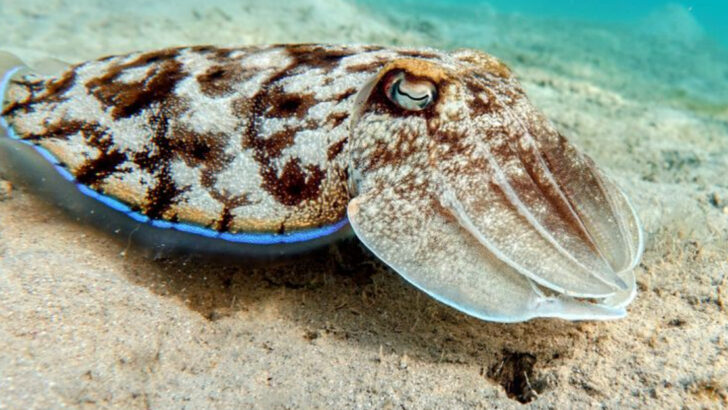Nature doesn’t play by the rules. While some animals evolve in ways we expect—sharper claws, faster legs, better camouflage—others take a wildly unpredictable path. Think fish that “walk,” lizards that squirt blood from their eyes, or frogs that turn transparent like living ghosts. Evolution is full of surprises.
Survival isn’t just about being the biggest or the strongest. Sometimes, it’s about being the weirdest. From creatures that thrive in boiling hot springs to those that turn their bones into weapons, the animal kingdom is packed with adaptations so strange they seem like science fiction.
These 18 animals have rewritten the rulebook, proving that evolution is a game of creativity, not just competition. Their survival strategies are bizarre, unexpected, and sometimes downright unsettling. But one thing is certain—life on Earth never stops finding new ways to adapt.
Mimic Octopus
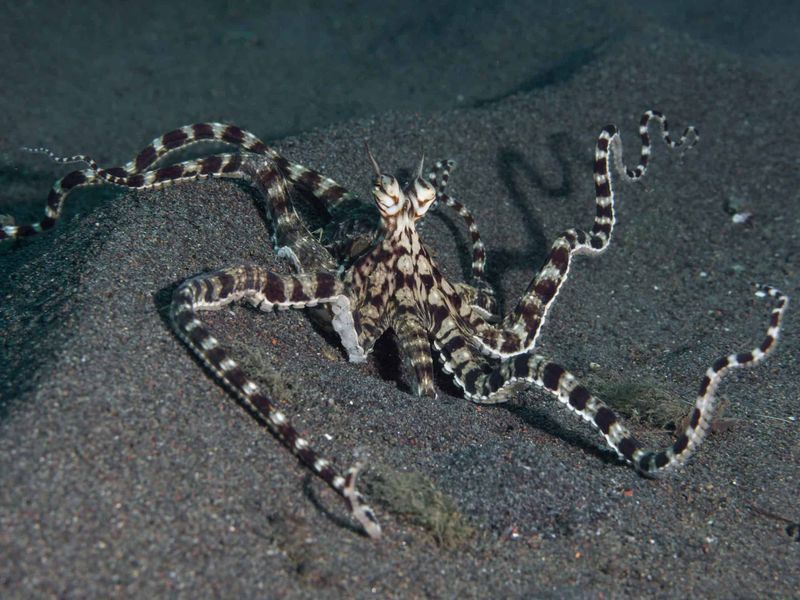
The mimic octopus is a master of disguise, able to change its shape, color, and behavior to imitate other marine animals. This remarkable ability allows it to avoid predators by mimicking more dangerous creatures, like the lionfish or flatfish.
By altering its appearance, the mimic octopus can blend seamlessly with its surroundings or transform into something entirely unexpected. This form of mimicry is not only fascinating but also an effective survival strategy in the diverse ecosystems of the ocean. It’s a stunning example of how evolution can craft creative solutions to life’s challenges.
Archerfish
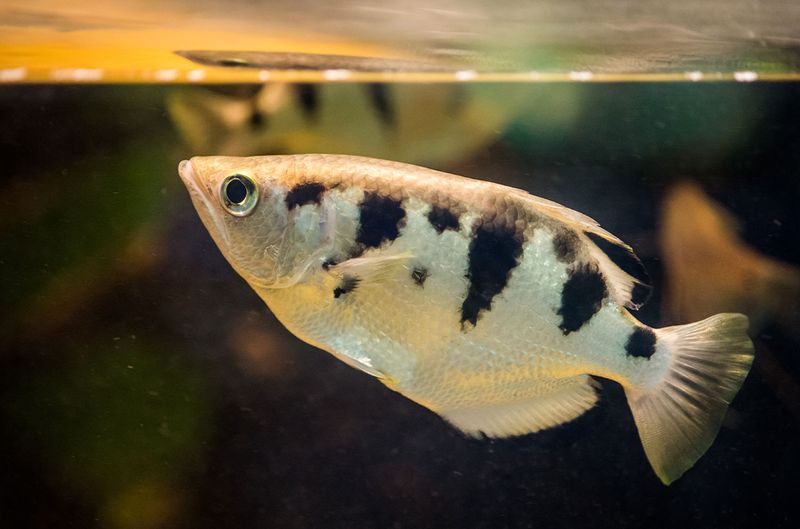
The archerfish has developed a unique hunting technique that involves shooting jets of water at insects perched above the water. This incredible adaptation enables it to knock prey into the water, where it can be easily caught.
The precision of the archerfish’s aim is astonishing, and it can calculate the refraction of light on the water’s surface to hit its target accurately. This adaptation showcases the intricate balance between physical evolution and behavioral skill, highlighting the archerfish’s ingenuity in securing its meals from above the water.
Pistol Shrimp
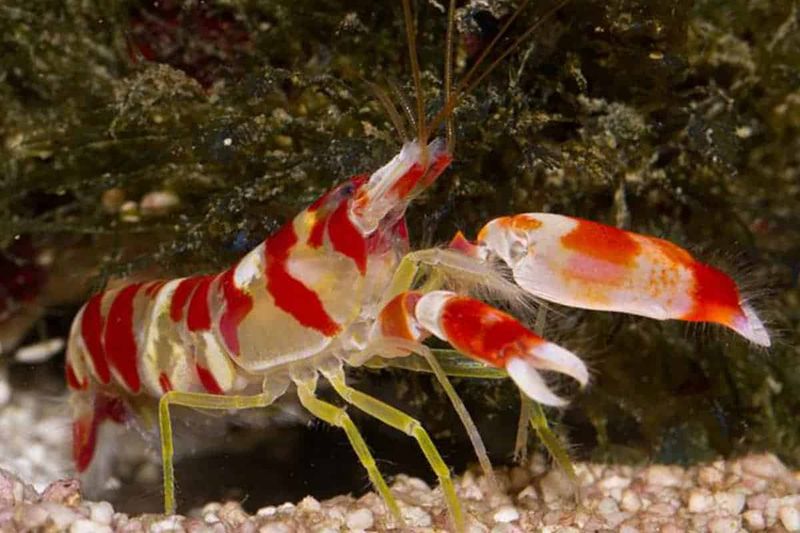
Pistol shrimp are known for their ability to create a powerful snapping sound by closing their specialized claw at incredible speed. This action forms a cavitation bubble, producing a shockwave that can stun or even kill prey.
This adaptation is not only a remarkable example of physical evolution but also a demonstration of nature’s inventive approaches to hunting. The pistol shrimp’s snapping ability allows it to dominate its environment, effectively hunting and defending its territory with sound alone. Its tiny but mighty adaptation makes it a true marvel of the underwater world.
African Elephant’s Ears
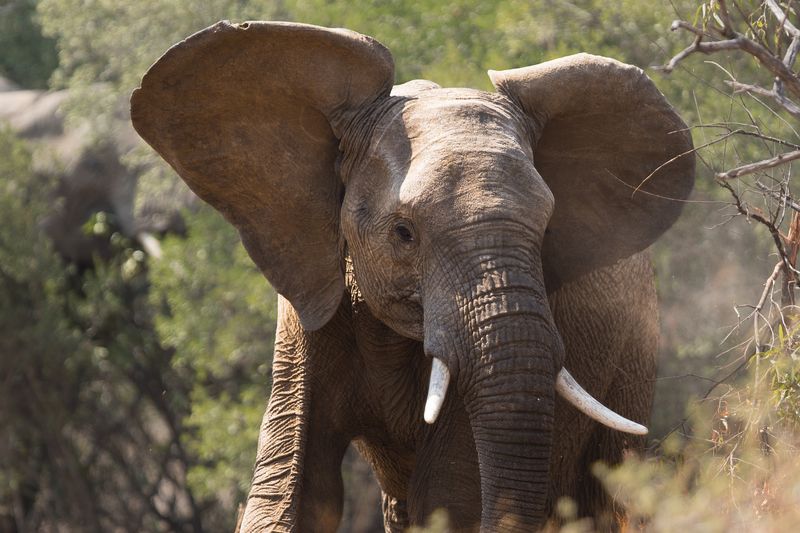
The African elephant’s large ears serve a crucial purpose beyond just hearing. These impressive appendages help regulate body temperature in the scorching African sun. By flapping their ears, elephants create a breeze that cools the blood flowing through the extensive network of vessels in their ears.
This cooling mechanism is vital for preventing overheating and allowing these massive creatures to thrive in their hot habitat. It’s a testament to how evolution has equipped animals with specialized tools to handle environmental challenges, showcasing the elephant’s remarkable adaptation to its climate.
Wood Frog’s Freezing Survival
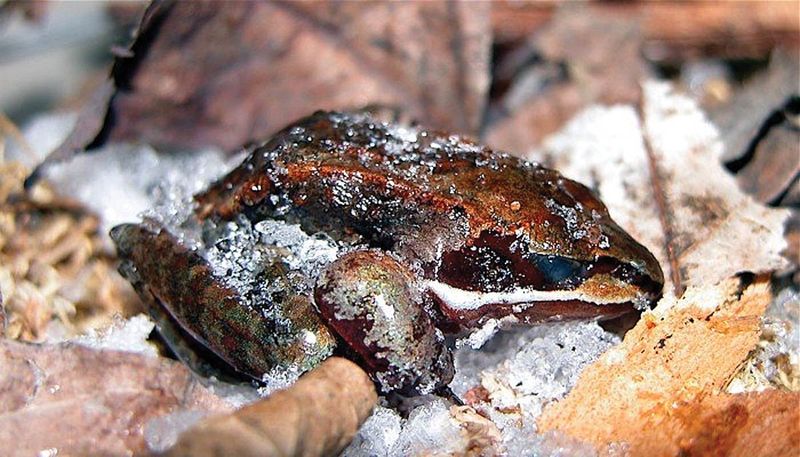
The wood frog has an extraordinary adaptation that allows it to survive being frozen during the winter. When temperatures drop, this amphibian enters a state of suspended animation, with ice forming in its body.
Despite being frozen, the wood frog’s vital organs remain unharmed. As temperatures rise, it thaws and returns to its active life, none the worse for wear. This adaptation highlights the frog’s ability to endure extreme conditions and is a fascinating example of evolutionary resilience, enabling survival in frigid environments where few others can.
Axolotl’s Regeneration
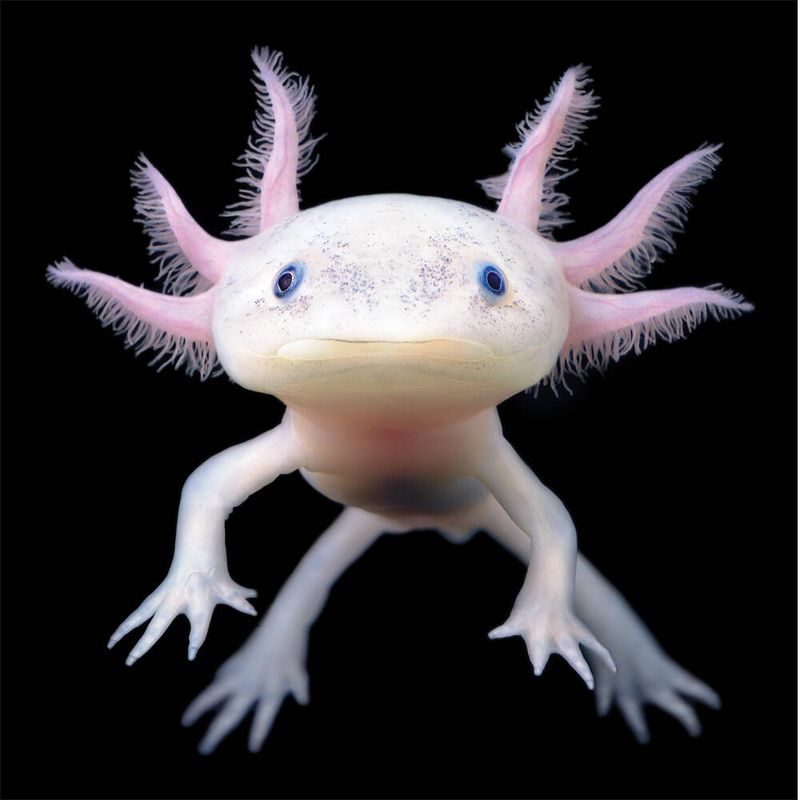
The axolotl, a unique species of salamander, possesses the incredible ability to regenerate lost body parts, including limbs, spinal cord, and even parts of its heart and brain. This regenerative power offers significant advantages for survival and recovery from injury.
Unlike other animals, the axolotl’s cells can de-differentiate and re-grow into the needed body parts, unlocking possibilities that are rare in the animal kingdom. This adaptation not only fascinates scientists but also provides insights into potential medical advancements, making the axolotl an inspiring example of evolutionary innovation.
Naked Mole Rat’s Pain Resistance
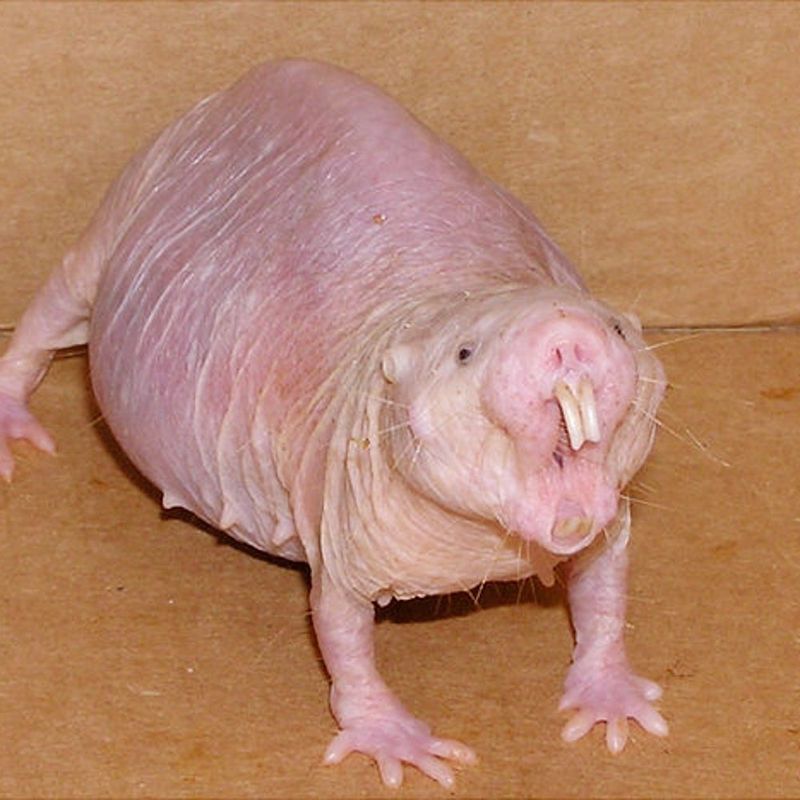
The naked mole rat possesses a unique adaptation that makes it insensitive to certain types of pain, particularly from acid. This adaptation is crucial for its survival in densely populated underground environments where high carbon dioxide causes acidic conditions.
By lacking certain pain receptors, naked mole rats can thrive in conditions that would be unbearable for other mammals. This adaptation not only ensures their comfort but also contributes to their longevity and resilience. Understanding this unusual evolutionary trait offers new perspectives on pain management and survival in challenging habitats.
Tardigrade’s Extreme Survival
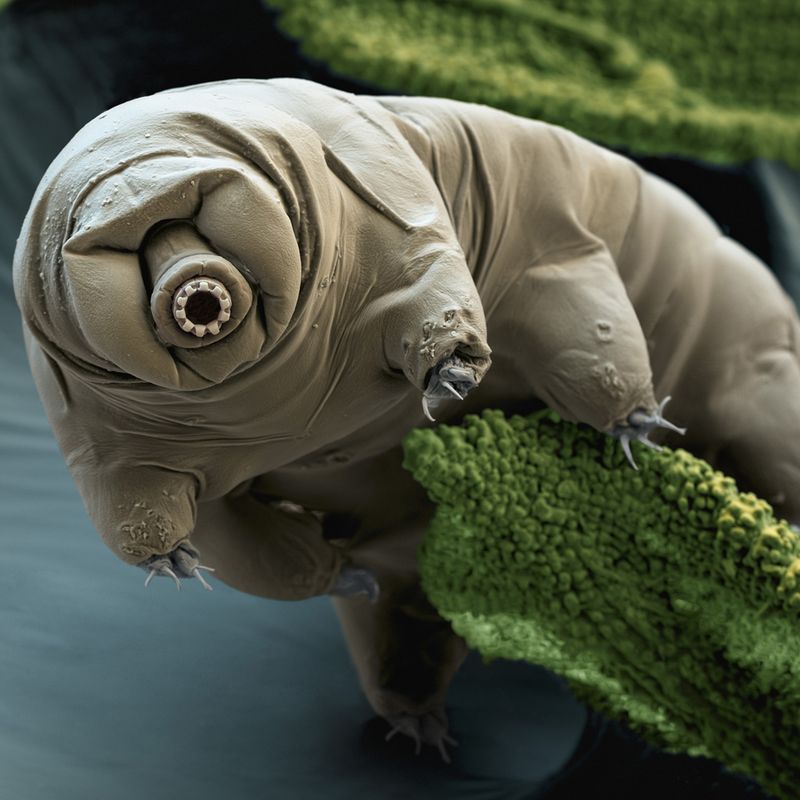
Tardigrades, often referred to as water bears, are renowned for their ability to survive extreme conditions, including the vacuum of space, high radiation, and severe dehydration. These microscopic creatures enter a cryptobiotic state, halting metabolic processes to endure the harshest environments.
Their unique proteins protect cellular structures, allowing tardigrades to withstand pressures and temperatures that exceed most other life forms. This extraordinary adaptation highlights the resilience of life on a microscopic scale, demonstrating nature’s capacity to equip even the smallest creatures with the means to conquer seemingly impossible challenges.
Star-Nosed Mole’s Touch Sensitivity
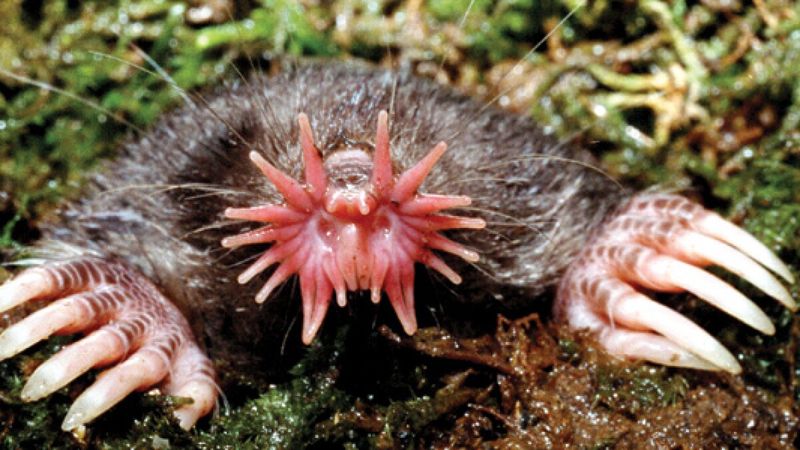
The star-nosed mole has a distinct adaptation: a star-shaped nose packed with sensitive nerve endings. This incredible appendage allows the mole to detect prey and navigate its subterranean world with remarkable speed and precision.
Each tentacle on the mole’s nose acts as a highly sensitive touch organ, helping it identify food in complete darkness. This adaptation showcases the power of sensory evolution, enabling the star-nosed mole to thrive in environments where sight is of little use. It’s an example of how nature tailors creatures to flourish in their specific niches.
Desert Lizard’s Water Collection
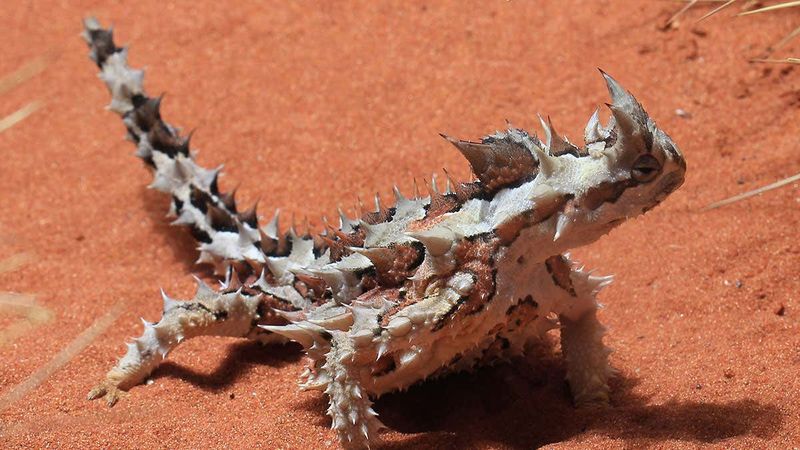
Desert lizards have developed a remarkable adaptation to collect water in arid environments. By utilizing their unique skin structures, they harvest moisture from the air and channel it directly to their mouths.
This survival mechanism is vital in desert habitats where water is scarce. The lizard’s adaptation is a testament to the innovative strategies evolved to overcome the challenges of living in one of the harshest climates on Earth. Through these specialized physical traits, desert lizards not only survive but thrive, illustrating the brilliance of nature’s adaptability.
Cuttlefish Camouflage
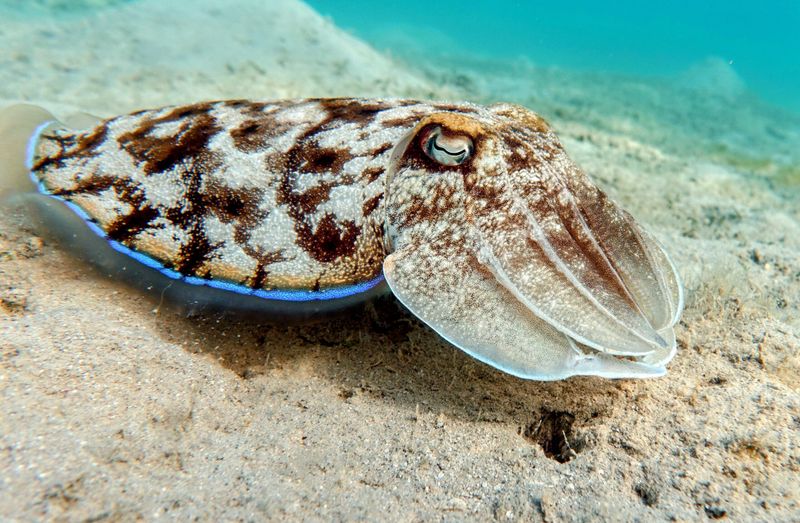
Cuttlefish possess an extraordinary ability to change their skin color and texture, allowing them to blend seamlessly with their environment. This skill is not only used for camouflage but also for communication and hunting.
The cuttlefish’s skin contains specialized cells called chromatophores, which expand and contract to alter its appearance. By mastering this art, cuttlefish can evade predators and surprise prey with remarkable efficiency. This adaptation is a striking demonstration of how evolution equips creatures with the tools to navigate complex ecosystems, showcasing their adaptability and survival skills.
Flying Fish’s Gliding Escape
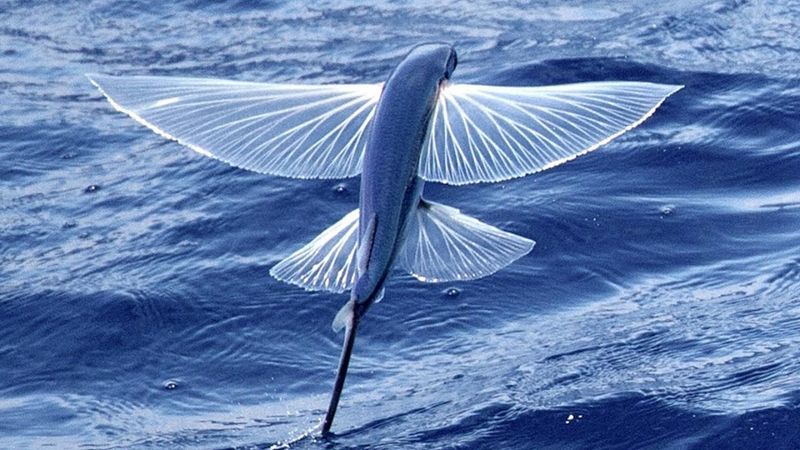
Flying fish have developed the ability to glide above the water to evade predators. By using their specially adapted fins, they launch themselves out of the water and glide for considerable distances.
This adaptation provides a unique escape route, allowing flying fish to avoid aquatic predators and swiftly relocate to safer areas. The combination of speed and aerial agility highlights the innovative solutions evolution provides for survival. Flying fish exemplify how adaptation can blur the lines between different modes of life, enhancing their chances of evading threats in the ocean.
Platypus’s Electroreception
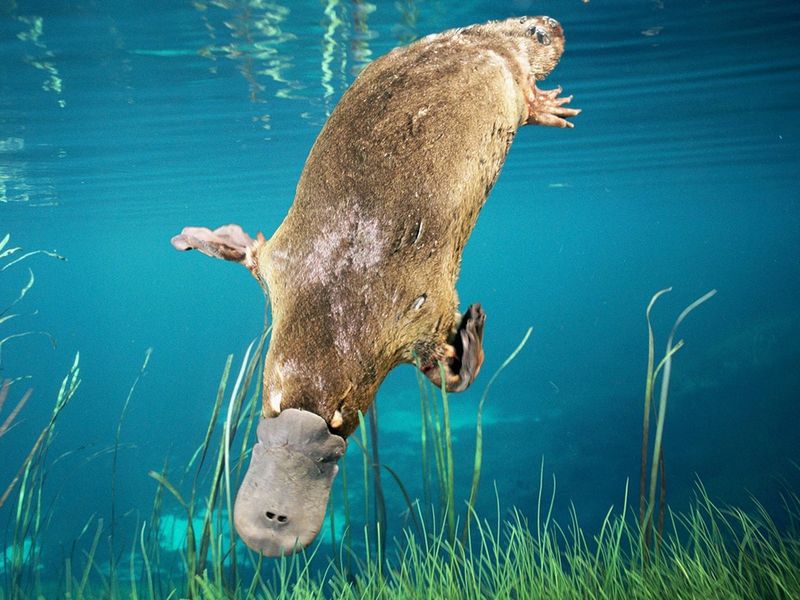
The platypus uses electroreception to locate prey underwater. This unique sensory adaptation allows it to detect the electric fields generated by muscular contractions of its prey, such as crustaceans.
By closing its eyes and ears, the platypus relies solely on its bill to navigate and hunt in murky waters. This adaptation showcases the complexity and diversity of sensory evolution, offering the platypus an edge in capturing hidden prey. It’s a fascinating example of how animals can evolve to exploit their environments in unexpected and highly specialized ways.
Kangaroo Rat’s Waterless Life
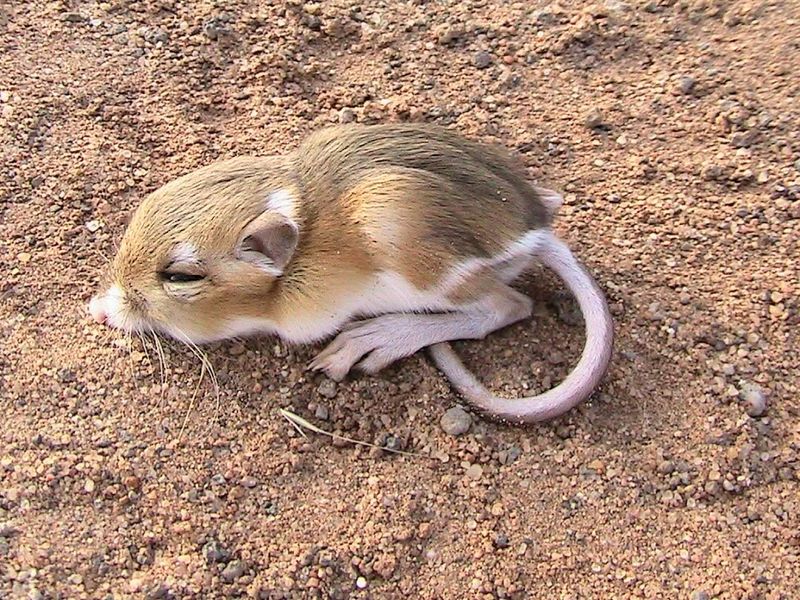
The kangaroo rat is adapted to survive in arid environments without direct water intake. Its kidneys are capable of producing highly concentrated urine, minimizing water loss, and its diet of seeds provides metabolic water.
This small rodent’s adaptations allow it to thrive in some of the driest places on Earth, showcasing nature’s ingenuity in overcoming environmental challenges. By efficiently conserving water, the kangaroo rat serves as a model of survival in desert conditions, demonstrating how life can persist against all odds through specialized biological mechanisms.
Bee Hummingbird’s Energy Efficiency
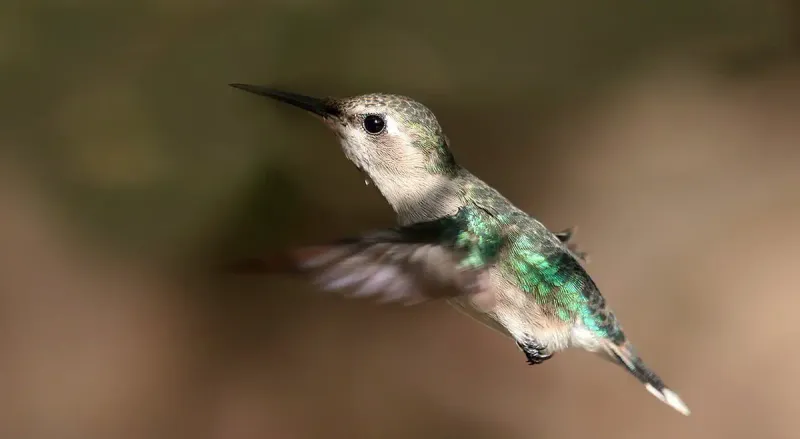
The bee hummingbird, the world’s smallest bird, has evolved to maximize energy efficiency. Its rapid wingbeats allow it to hover while feeding on nectar, requiring a high metabolism supported by a diet rich in sugars.
Despite its tiny size, the bee hummingbird’s heart rate and breathing are finely tuned to sustain its energetic lifestyle. This adaptation underscores the balance between size, diet, and energy use, illustrating how evolution can fine-tune organisms to fit their ecological niches. The bee hummingbird is a testament to the complexity and precision of natural selection.
Clownfish’s Symbiotic Relationships
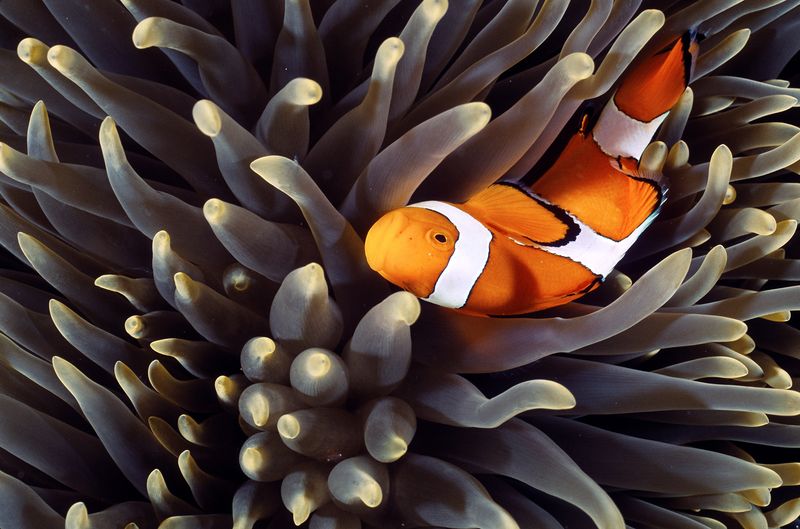
Clownfish have developed a symbiotic relationship with sea anemones, providing mutual benefits for both species. The clownfish gains protection from predators by living among the anemone’s stinging tentacles, which they are immune to.
In return, clownfish help keep the anemone clean by clearing debris and providing nutrients through waste. This adaptation not only enhances the clownfish’s survival but also contributes to the health of its host. These relationships highlight the interconnectedness of marine life and the creative strategies that species evolve to flourish together in complex ecosystems.
Narwhal’s Tusk Functions
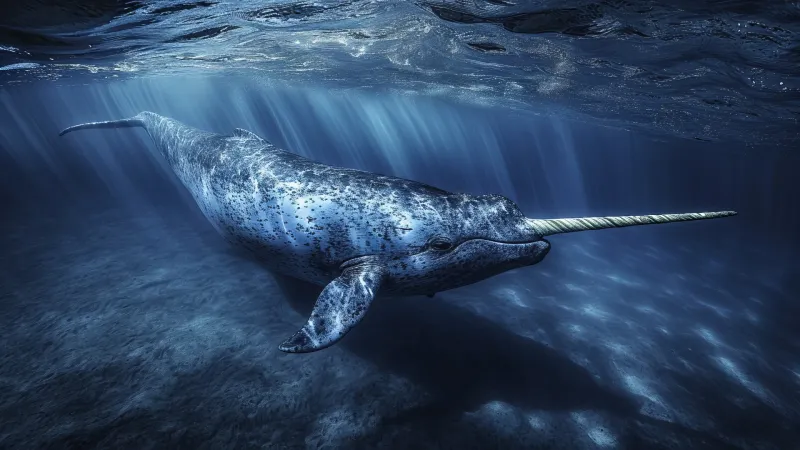
Narwhals possess a long, spiral tusk that has puzzled scientists for centuries. This tusk is actually an elongated tooth, sensitive to changes in the water’s environment.
Research suggests that the tusk plays a role in social interactions and may help the narwhal sense temperature and salinity changes. This adaptation emphasizes the multifunctional uses of physical traits in animals and how evolution can repurpose structures for various needs. Narwhals demonstrate the ongoing mystery and allure of marine life adaptations, inviting further exploration into their unique biology.
Sloth’s Energy Conservation
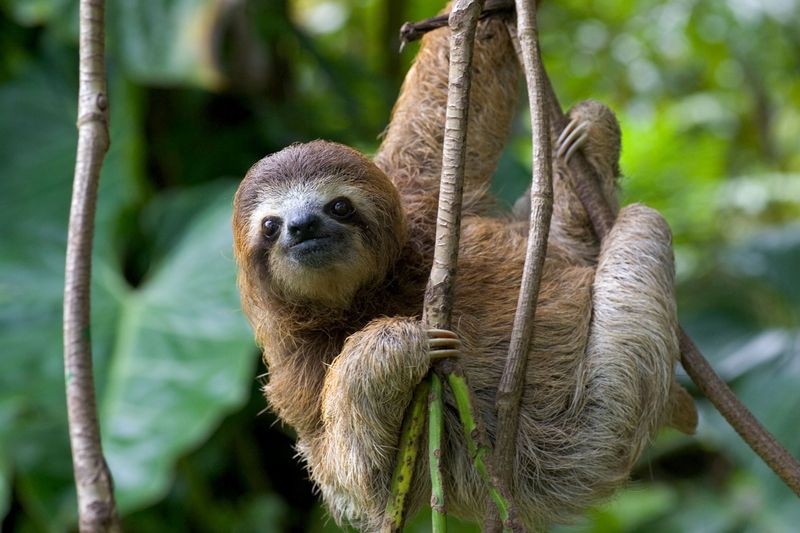
Sloths have adapted to a slow metabolism, conserving energy by moving leisurely and hanging upside down from trees. Their specialized claws and muscles support this lifestyle, enabling them to thrive in tree canopies.
By minimizing energy expenditure, sloths can survive on a diet of leaves, which are low in nutrients. This adaptation illustrates how evolution can favor energy efficiency, allowing creatures to coexist with the resources available in their habitats. Sloths epitomize the balance between energy use and resource availability, showcasing the diverse strategies employed by animals to adapt.

